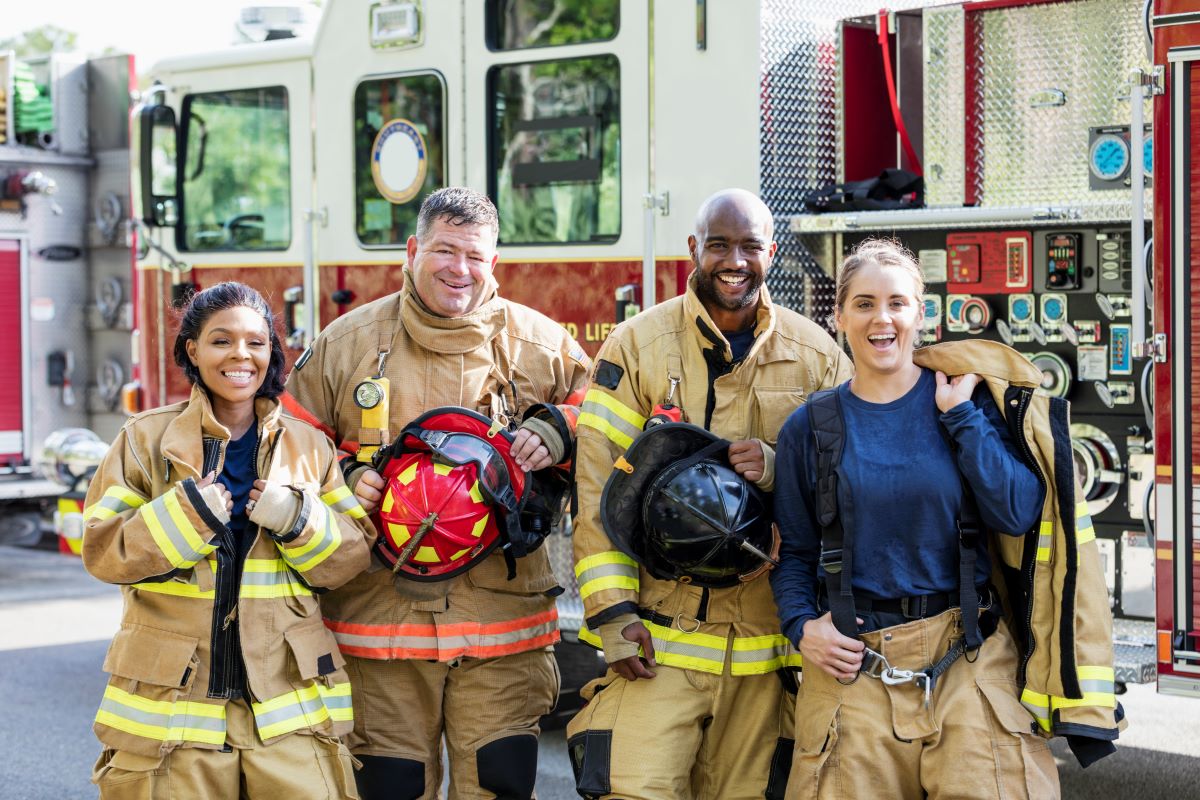5 Key Trends in Fire Service for Instructors

Fire Engineering Magazine and other leading media organizations that follow trends in firefighting and firefighting instruction have tracked the latest industry sentiments and field studies to better refine firefighter instruction to meet current and evolving real-world needs.
The publication quotes Bill Gardner, the retired fire chief and Senior Director of Fire Product for ESO, the leading emergency medical services (EMS) data and software company. Gardner says, "The fire service is at a pivotal moment, exacerbated by COVID-19. Departments will face multiple challenges, including staffing shortages and the evolution of service delivery models that will require different thinking and more involved community engagement. Additionally, we’ll need to find creative ways to ensure the safety and well-being of our people.”
In light of the challenging and rapidly changing world in which we all live, fire service instructors must take care to keep pace with the times. Read on to learn about five key trends in fire service for instructors right now.
Staffing challenges will continue
The massive staffing shortage that many know as the “Great Resignation” has affected the fire service as it has most others. Fire departments across the United States are struggling both to recruit new talent and to retain experienced senior officers. Leaders in the field are also encountering difficulty when it comes to keeping staff up to date with necessary certifications and continuing education. To meet these challenges, senior officers will need a bedrock of practical training themselves.
The Public Safety Group’s Fire Officer: Principles and Practice provides an essential framework of leadership skill-building and management theories that officers can use to meet any number of vital objectives.
Community engagement will be more important than ever
As people demand more transparency and accountability from its public service providers, firefighters are under increasing pressure to showcase value and manage optics. In short, the fire service, like all other publicly funded services, must demonstrate its clear benefit to the community and maximize its social dividends.
This makes engagement with the community more important than ever for fire departments everywhere. It isn’t enough to simply achieve professional benchmarks. Individuals in the fire service must be able to communicate with the community in a clear and engaging way. Social media has proven a valuable tool in this endeavor, as an example.
Emergency responder wellness and mental health will advance as a top concern
In the wake of the stressful health and operational restrictions of the COVID-19 pandemic, firefighters and other emergency responders are more concerned with their own protection and well-being than ever before. In fact, the often-overwhelming physical health hazards that firefighters face on a daily basis generally lead to other problems that might include fatigue, burnout, anxiety, and depression.
Public Safety Group offers a course for individuals who aspire to support firefighters, EMTs, and other public safety officers with their mental health needs. PSG’s
Firefighters will become more concerned about long-lasting health impact
Fundamentals of Fire Fighter Skills and Hazardous Materials Response features updated behavioral and physical health awareness topics and statistics and is a key tool in the fight for long-term health for firefighters. Due to their extremely stressful work environments and their frequent exposure to airborne toxins and other harmful agents, firefighters are at an increased risk for deadly physical disorders that range from cancer to cardiac arrest.
For example, the US Centers for Disease Control and Prevention declared cancer the top cause of death among firefighters. By employing preventative measures such as decontamination showers, fire departments across the country are striving to reduce firefighter cancer rates that seem to be out of control.
Service and delivery models will continue to evolve
The increased need for health and safety outreach that we experienced at the height of the COVID-19 pandemic may have changed our public service expectations. This means that the average fire department might be called upon to do far more than basic firefighting-related activities.
As the realities of working as a firefighter continue to evolve, so must the training that will lay the foundation for the ongoing work of the firefighter in the professional arena. In short, firefighting educators face an uphill battle when it comes to ensuring that trainees have the expertise that they need to function and excel in a modern work climate that is constantly changing.
In addition to the textbooks Fundamentals of Fire Fighter Skills and Hazardous Materials Response and Fire Officer: Principles and Practice discussed above, the Public Safety Group has a full line of materials to meet various advanced and specialized training needs. The Group also covers a broad scope of relevant fundamentals through texts such as Fire and Emergency Services Instructor: Principles and Practice and Introduction to Fire Protection with the Emergency Services Instructor's ToolKit.
Fundamentals of Firefighter Skills and Hazardous Materials Response Includes Navigate Premier Access
Fundamentals of Firefighter Skills and Hazardous Materials Response, Fifth Edition, provides new content that meets the intent of NFPA 1010, 2024 Edition Standard on Professional Qualifications for Firefighters that includes Chapter 6: Firefighter I (NFPA 1001) and Chapter 7: Firefighter II (NFPA 1001).
Instructors: Request More InformationRead more:
.png)